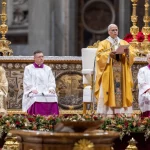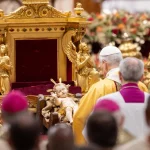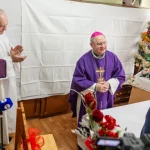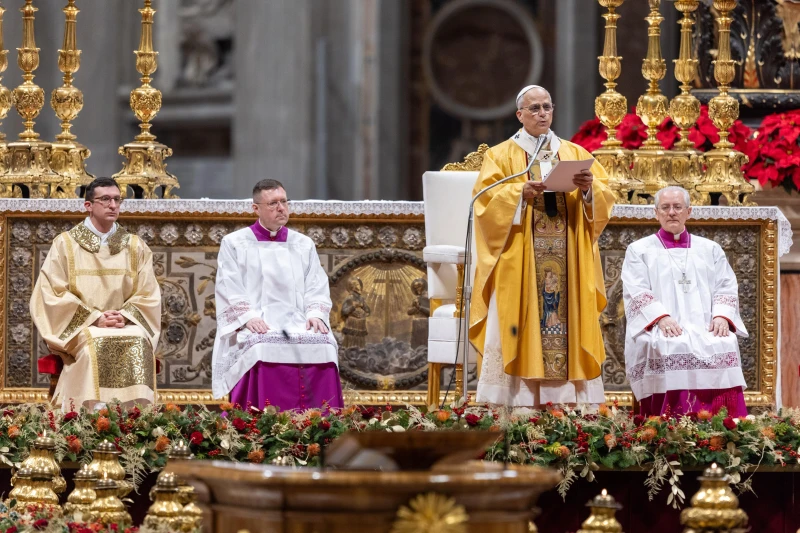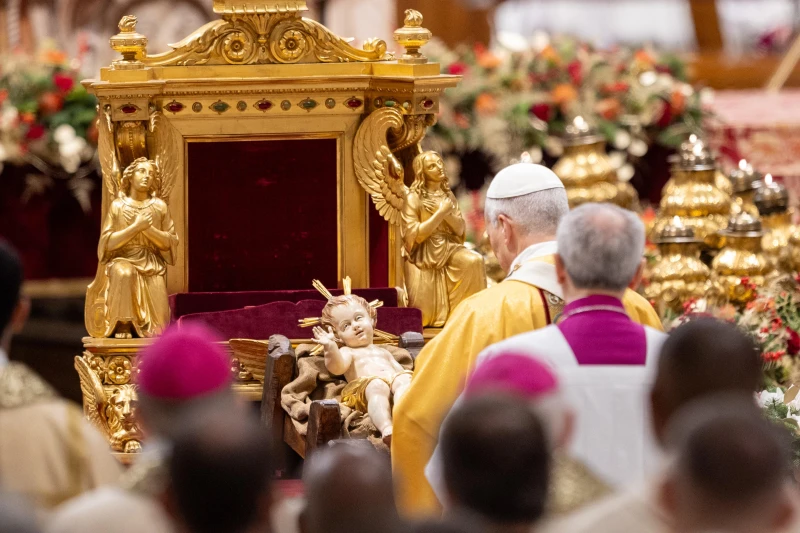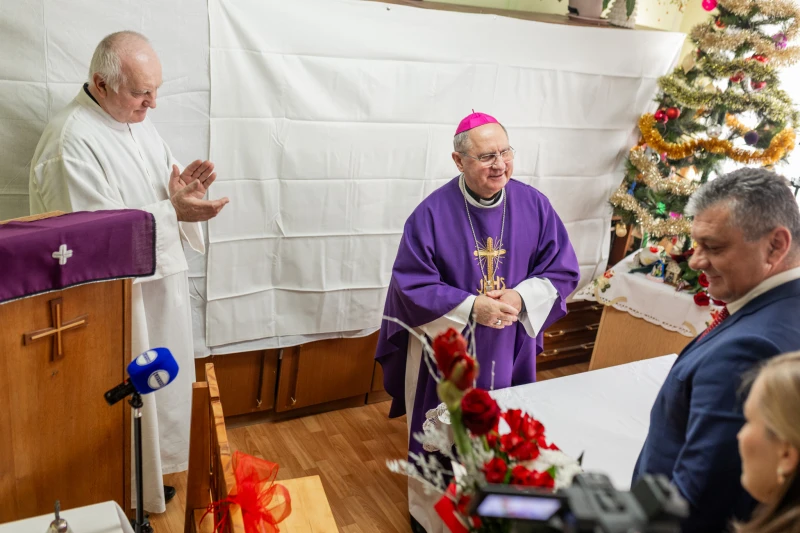Stained-glass window at the Cathedral Basilica in St. Louis. / Credit: Ella Manthey/Shutterstock
St. Louis, Mo., Oct 31, 2023 / 14:15 pm (CNA).
The Vatican’s Dicastery for the Clergy has agreed to review the mergers of two Archdiocese of St. Louis parishes, which Archbishop Mitchell Rozanski had decreed in May as part of a major pastoral planning initiative affecting parishes and priests in the archdiocese.
Rozanski received correspondence this week informing him that the dicastery has accepted petitions for recourse against decrees related to two parishes: St. Elizabeth, Mother of John the Baptist Parish in St. Louis, and Sts. Philip and James Parish in River aux Vases, Missouri.
Both parishes had, at Rozanski’s direction, been subsumed into others in recent months, creating new parish groupings. Under Rozanski’s decree, St. Elizabeth had been grouped together with three other parishes, while Sts. Philip and James was subsumed into one other parish.
St. Elizabeth and Sts. Philip and James were just two of several parishes that sought recourse from the Vatican against Rozanski’s decrees, beginning this summer. Under canon law, a diocesan bishop has the authority to alter parishes, but only for a just reason specific to each parish. Concern for souls must be the principal motivation for modifying a parish.
“In accepting a petition for hierarchical recourse, the Dicastery for the Clergy does not reverse the archbishop’s decision but agrees to review the decision at the request of the recurrent [the person who petitioned for recourse],” the archdiocese told CNA on Monday.
There is no specific timeline for the Vatican’s review of the decrees, but a decision could take several months, the archdiocese said.
This news comes amid the continued effects of the “All Things New” restructuring plan in the St. Louis Archdiocese — which is Missouri’s largest and oldest — that already has led to numerous parish closures and widespread clergy reassignments. The consultation process leading up to the parish changes was administered by the Pennsylvania-based Catholic Leadership Institute (CLI) and is very similar to ones undertaken by CLI in recent years in other major midwestern archdioceses, such as Pittsburgh and Cincinnati.
Archbishop Mitchell Rozanski of St. Louis addresses the crowd at “SEEK First,” a preview event put on by the Fellowship of Catholic University Students in St. Louis on Oct. 1, 2022. Credit: Jonah McKeown/CNA
Under Rozanski’s original decrees, according to the archdiocese, the number of parishes in St. Louis was set to be reduced by 43, from 178 to 135. This encompassed 32 parishes being subsumed by others, two parishes being closed entirely (suppressed), 15 parishes being merged into five new parishes, and one new Spanish-language parish being created.
“Canon 139 §2 states that a lower authority is not to become involved in cases submitted to a higher authority except for a grave and urgent cause,” the archdiocese noted.
“In these matters, the archbishop of St. Louis is the lower authority and will therefore make no further decisions while the recourse process is pending.”
While accepting two of the petitions, the Dicastery for the Clergy also rejected petitions for recourse against decrees related to two parishes, the archdiocese said. Those parishes are Blessed Teresa of Calcutta in Ferguson and St. Matthew the Apostle in St. Louis.
In addition, the dicastery also rejected three petitions for recourse related to new priest appointments at several archdiocesan parishes: Holy Rosary in Warrenton and St. Mary’s in Hawk Point; St. Elizabeth Ann Seton in St. Charles County; Holy Family Parish in Port Hudson, St. Ann Parish in Clover Bottom, and St. Gertrude Parish in Krakow; and Annunziata Parish in Ladue and Ste. Genevieve du Bois Parish in Warson Woods.
Before making the parish and priest changes, the archdiocese held some 350 listening sessions with parishioners, with at least one in each of the 178 former parishes. It also considered feedback from 70,000 Catholics in the archdiocese who participated in a survey as well as other feedback. The reasons given by the archdiocese for undertaking the process include unsustainable trends in clergy numbers as well as demographic changes in the archdiocese.
Some Catholics in the archdiocese were critical throughout the All Things New process because of the extent to which proposals would shake up parishes, both in terms of mergers and in the widespread reassignment of priests. More than 3,000 Catholics in the archdiocese signed a petition that asked the archbishop to halt the plan entirely.
That petition criticized the structure of the survey and claimed it only allowed the faithful to answer predetermined questions without being allowed to address specific situations in their own parish. It also claimed the process would cause mistrust in Church leadership, which could drive Catholics away.
Rozanski ultimately declined to revoke any of the 83 decrees he made regarding the final plans, leaving parishes with recourse only to the Vatican.
The St. Louis parishes’ appeals to the Vatican are not unprecedented in the United States. In dioceses such as Cleveland, Buffalo, New York, Boston, and Springfield, Massachusetts, parishioners have issued appeals to the Dicastery for the Clergy to save their parishes after their bishops ordered them closed.
In 2011, the Vatican upheld the then-Springfield bishop’s decision to dissolve three parishes but did not allow the closure or deconsecration of the buildings. The next year, following a ruling from the Vatican, then-Cleveland Bishop Richard G. Lennon announced he would reopen a dozen parishes closed in 2009 and 2010 as part of a comprehensive reconfiguration plan.
And in 2014, a decree from the Dicastery for the Clergy stated that St. Ann’s Church and Shrine in Buffalo could not be sold or repurposed for profane use. The Buffalo Diocese had closed the shrine and was seeking to sell the complex to a secular developer. The Church’s highest court, the Apostolic Signatura, in 2017 reversed the dicastery’s decree at the request of then-Bishop Richard Malone. As of early 2023, the former shrine is slated to become a mosque after being sold to a Muslim group.

